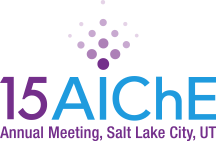

Last year Japan celebrated the 50th anniversary of the Tokaido Shinkansen, and only now does the climate seem ripe for high-speed passenger rail in the United States. California, Florida, and Texas all have high-speed passenger rail projects currently underway. No one knows when the first train will leave the station, but the technology is proven and working in other countries. With investment and lobbying taking place nationwide, it is no longer a question of “if” the United States will have high-speed rail – only who, how, and when. The time to recalibrate and avoid divisive, and potentially fatal, sidetracking is now – before the first train leaves the station.
High-Speed Rail is globally successful across different governments and topographies. High-speed TGV lines in France are so successful in some markets their profits are paying for upgrades of conventional rail lines. Re-urbanization and new economic growth have been cited in both Europe and Japan- touting the larger economic, social, and environmental benefits of HSR to a region. The United States government does not need to completely fund or control this new industry- it will grow organically if the government removes current obstacles and redefines its roles for specific market conditions. Federal, state, and local governments do have important roles to play in encouraging growth, planning, and safety.
